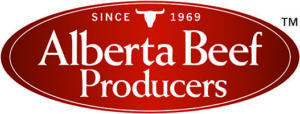ABP and ALMA Accepting Applications for Forage Research Funding
Attention researchers:
The Alberta Beef Producers (ABP) and the Alberta Livestock and Meat Agency (ALMA) are now accepting letters of intent (LOIs) for research and development in areas that address targeted industry priorities.
As stated by ABP “The purpose of this $1 million targeted call for proposals is to focus on forage research priority areas benefiting Alberta’s cattle producers. Forage is the key driver of Alberta’s cattle industry competitiveness, accounting for two-thirds of costs.”
Only LOIs related to the following targeted priority research areas will be considered:
- Improved grazing, management, and forage mixture strategies that optimize hay yields and beef production from native range and tame pastures.
- Quantification of varietal and species differences in the ability of grasses, legumes, and annual forages to maintain nutritional quality throughout the grazing season and in extended stockpiled or swath grazing systems.
- Quantification of cereal forage variety differences in digestibility, nutrient profile for extended (stockpiled, bale or swath) grazing and ensiling potential.
- Evaluation of yield, nutrient profile, and animal performance of new forage varieties in geographical regions beyond the development region.
- Utilization and management strategies of forage varieties and mixtures to improve feed efficiency, reduce incidence of nutritional disorders, and improve reproduction.
- Development of perennial and annual forage varieties with improved nutritive value and agronomic characteristics (e.g. yield, stand longevity and persistence, improved resource use efficiency, drought resistance, disease resistance, carbon sequestration ability, etc.).
More information on how LOIs should be submitted and will be evaluated by ABP and ALMA is posted.
Deadline for submission is June 24, 2015.
Also note that the BCRC’s next call for proposals will be announced here on the BCRC Blog first. If you are not already subscribed to receive notifications by email of new blog posts, click here to sign up.
Click here to subscribe to the BCRC Blog and receive email notifications when new content is posted.
The sharing or reprinting of BCRC Blog articles is welcome and encouraged. Please provide acknowledgement to the Beef Cattle Research Council, list the website address, www.BeefResearch.ca, and let us know you chose to share the article by emailing us at info@beefresearch.ca.
We welcome your questions, comments and suggestions. Contact us directly or generate public discussion by posting your thoughts below.

